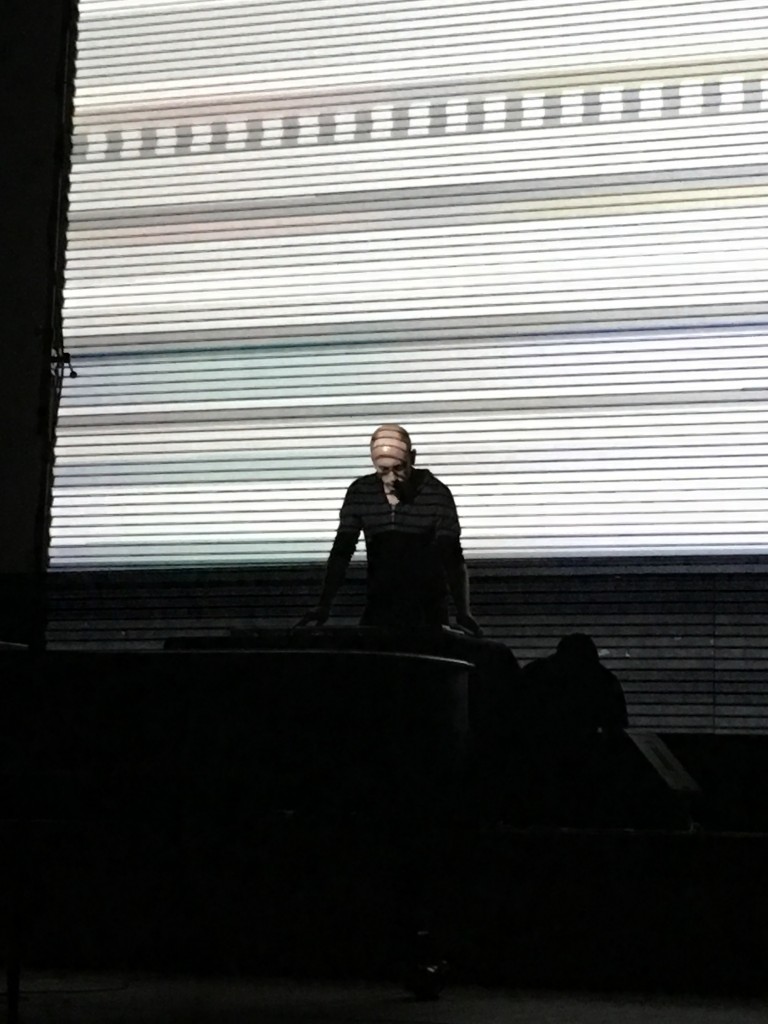With piano and circuits, Tristan Perich creates a new future for music
While it’s fair to say that Tristan Perich is an avant-garde composer, it’s more exact to say that he is at the vanguard of contemporary music.
More than any composer of his generation, Perich is establishing a new language and a new future path for music. His position and, especially, his accomplishments so far, make him a school of one.
Perich, like predecessors Robert Ashley and Alvin Lucier, has moved from conceptual and sound art to composing in the classical sense. But the details of his work set him apart, predominately in the way he has realized his conceptions through instruments, objects, and machinery. His first notable work was 1-Bit Music, written in code and produced by a 1-bit sound chip encased in a CD jewel box: plug in headphones, turn it on, and be amazed by the ingenuity of the system, then impressed by the quality of the music.
Perich followed this with the expanded design of the 1-Bit Symphony (the score of the first .01 second of the piece is published as a 700-page book), and with a series of physical installations. Among these are the Microtonal Wall, a series of 1500 speakers each tuned to a different microtonal pitch and spanning four octaves. The visual design was as appealing as its sound.
Perich appeared at Roulette Thursday night, playing three solo improvisations, one for piano, using 1-bit tones, the last using 1-bit noise. The program was a culmination of past and recent work, highlighting his pianist background, his interest in the mechanical way the piano makes sound, and his Compositions project: a set of four recordings—Active Field, Dual Synthesis, Telescope, and Parallels—each packaged with a poster printed with the score. It is one of the most outstanding recordings of new music of this century.
The Roulette performance mixed the expected rewards and satisfaction from his music with some exciting surprises. His improvising was as thought-through, logical, and enjoyable as his composing, and Perich was also impressive at the keyboard.
He is an agile pianist with a graceful touch. The improvisation at the instrument began with high-speed four- and eight-note figures, all played cleanly and with a delicate sense of phrasing.
Beginning in the upper register of the keyboard, Perich maintained a consistent quickness and pulse, even as he gradually began to drop in notes and runs that extended the music into lower registers. He played an increasing number of flourishes and quietly dramatic gestures that were lovely and free of narrative meaning— the improvisation was reminiscent of Debussy’s “Jardin sous la pluie” in both sound and in how he built an exacting form from nothing.
Repetition is fundamental to his music, but Perich is not a minimalist. Electronics are a fundamental, but he’s not an electronic composer, nor does he attempt to make an interface between acoustic and electronic sounds; they are just instruments to him.
His fundamentals are, indeed, fundamental: pitch, rhythm, timbre. He doesn’t use synthesizers, but 1-bit sound chips, producing square waves in simple on/off configurations.
For the 1-bit one improvisation, he played a circuit board using an electronic keyboard. The keyboard also triggered, in real-time, 1-bit projections (black or white squares) that played on a screen behind him, both framing and washing over him. In the dark of the theater, Perich, bent slightly, suggested the Pinhead character from the Hellraiser movies, a fantastic figure presiding over exhilarating dense, energetic sounds. He creates dynamics through density or sparsity of notes and makes gorgeous music with minimal means, expanding to fill large-scale dimensions of time and space.
The noise improvisation was played in the dark, and was a remarkable experience. Without pitch, Perich had the crackling noise of the chips to work with, and used the management of density of sound and activity to shape the piece. At it’s sparsest, the sound was clicks from a Geiger counter, while at the opposite end Perich built massive walls of noise that had the exalted, sensuous rumble of a Saturn V rocket thruster. The noise created fascinating psychoacoustic effects, including complex rhythms and the sense that the sound had left the speakers and had become a palpable part of the room.
Perich’s improvisations were vital in a larger cultural sense; the sheer sound of his repeated patterns and crunchy square waves is the sound of contemporary life, of mechanical and digital machinery, the measured audio distances between subway stops, the sound notifications from our electronic equipment, all inside the routines of life. Perich is shaping a musical future out of the past and present.




Posted Dec 04, 2015 at 1:39 pm by Bob Barber
One of the best concerts I’ve attended in a long time. Highly original and beautiful in the best sense.
Posted Dec 04, 2015 at 1:41 pm by Candace Dwan
What an outstanding piece!
So loved reading this!